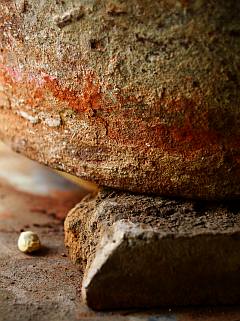Remember when you were little and your parents had guests over? At some point the conversation would inevitably turn to you and your astonishing talents. Maybe you were a great piano player, or a master reciter of Little Bo Beep, or your sneeze was funnier than anyone else’s on your street. Whatever your alleged talent, you were put on the spot more than once to demonstrate it to friends and strangers. If you are a photographer, or are know to be that guy/girl who’s always fiddling with a camera, I’m sorry to inform you that you’re doomed to be that awkward kid in the living room for the rest of your life. People will always expect you to deliver stupendous photographs of their tired-looking cousin from out of town, on demand, no matter how much he reminds you of the neighbour’s chihuahua. That is your burden in life.
Needless to say, such high expectations are often disappointed. You can have the best camera in the world and read all the professional photography tips you want, but it all comes down to whether or not you feel like taking photographs. Without inspiration to make them special, your pictures will be cold and mechanical, not for lack of technique but because you just weren’t looking right. And believe me, stellar photos of tired-looking cousins require more right looking than you think.
The solution is to always keep your photographer’s eye active and inspired to meet the challenge. If you find yourself uninterested, uninspired, and unmotivated to take the great pictures you would like to be taking, try these simple techniques to find your photographic inspiration.
1] Devour interesting photography

There is nothing as encouraging as seeing the remarkable work of others. The internet has become a haven for the photographic image and we all know of the ubiquitous Flickr. But if you want to browse through a large variety of photographic images, hand picked by fans, I would highly recommend We heart it (as long as you don’t mind the occasional bout of nudity). It’s a wonderful social site where people tag and vote for outstanding images; A great way to see the pick of what is out there on the web.
Having mentioned the remarkable, I can’t ignore how inspiring the seemingly mundane can be. I recently stumbled across Facehunter, blog of street pictures of people who the photographer considered stylish or noteworthy. It makes for a strange collection of ordinary images of sometimes extraordinary people. The subjects are varied and the settings are eclectic, a heady combination.
When it comes to studying images in detail, nothing can replace the visceral nature of seeing them in print. A good book of photographs can serve forever to pick you out of your less creative phases. It can provide many enjoyable hours of flipping through it at leisure. The kind of photography books you like is very much a personal choice. There are hundreds of good ones out there so take your pick.
There are some classics amongst these books of photographs, and one such is The Decisive Moment, a large and handsome manuscript of Henri Cartier-Bresson’s stunning images. Copies of this out-of-print masterpiece are much sought after by collectors, so unless you are in the mood to spend a small fortune on getting the real thing you’re out of luck. Thankfully in emergencies such as this digital technology sometimes comes to the rescue. A kind soul has helpfully photographed the manuscript and made it browsable online. Take your time and savour the images.
2] Study the arts
 The early photographers very often painters experimenting with a new medium, so they brought into it many painterly sensibilities. Painting has the longest history of all the visual arts, and in it can be found all the visual techniques and lessons any image maker might care to learn. So, like painters throughout history, the interested photographer would do well to study the masters and imbibe some of their visual inventiveness and wisdom.
The early photographers very often painters experimenting with a new medium, so they brought into it many painterly sensibilities. Painting has the longest history of all the visual arts, and in it can be found all the visual techniques and lessons any image maker might care to learn. So, like painters throughout history, the interested photographer would do well to study the masters and imbibe some of their visual inventiveness and wisdom.
Modern graphic design and visual arts might never be regarded with the same reverence as the painters of yore, mainly due to the fleeting nature of the medium, but that is not to say they are any less deserving of your attention. Every designer worth his graphics tablet has a portfolio of work online which you could track down, but like photographs it is so much better to have a single source selected by other fans of the medium. Ffffound is just such a source. It is similar to We heart it, but while you will find some photography, its outstanding examples of the other graphic arts is much richer and more vibrant. For a more magazine-like exploration of artists and projects in a variety of creative fields (with a heavy bias towards the visual), don’t forget to drop by Computerlove, a worthy pit stop on your path to visual inspiration.
While the visual arts are a natural choice for photographers to gravitate to in their quest for visual stimulation, it would be unwise to ignore the myriad of other art forms that exist. In the material arts, architecture can not only be a great stimulator of the photographic eye, but also one of its most rewarding subjects. Become familiar with the great architecture of the world and you never know what tangents of photographic invention it sends you off on.
3] Learn something new
 Knowledge can be a great inspiring force. When in a rut, pick up your camera manual and start reading. Unless you are an old school purist with a completely manual film camera, it is safe to assume that your photographic tool is a very complicated thing with many hidden complexities. Most of us never scratch the surface of what our cameras are capable of, settling into a comfortable ignorance of all those features we don’t regularly use. It is a good idea to remind yourself of what you have forgotten or conveniently ignored, because new techniques can open new trains of thought, which can lead to previously unexplored areas of photography.
Knowledge can be a great inspiring force. When in a rut, pick up your camera manual and start reading. Unless you are an old school purist with a completely manual film camera, it is safe to assume that your photographic tool is a very complicated thing with many hidden complexities. Most of us never scratch the surface of what our cameras are capable of, settling into a comfortable ignorance of all those features we don’t regularly use. It is a good idea to remind yourself of what you have forgotten or conveniently ignored, because new techniques can open new trains of thought, which can lead to previously unexplored areas of photography.
If you cant find the manual to your digital camera, try to track it down. And if you rely on some classic piece of equipment there is even more searching to be done. In fact, even if you don’t own a classic old camera, I suggest you visit that last link and browse through some of the old manuals. Not only are some of them great visual material, but they will make you realise how little technology is actually required to take good pictures. I found the manual to a Praktika MTL5 SLR, an old heavy workhorse of a camera that could take exquisite photographs and also be used as a blunt weapon when required. I still have one of these and even I was reintroduced to some nuances I had forgotten.
Beyond the technicalities and the machinery, what you must learn is how to think like a photographer, and when it comes to quick photographic thinking, there is little that can compete with documentary photography for a challenge. There are many books by many photographers on the subject of photography but few include the thoughts of 61 photographers on how they think and how they thought when capturing some of their images. Magnum Stories is a valuable addition to any photographer’s bookshelf.
4] Scrutinize your world
 Photography, like drawing, is ultimately about looking and seeing things in a certain way; The photograph itself is simply a record of that seeing. This is why the ultimate source of stimulation and inspiration for any photographer is life itself, and the world around you. The world sits there unchanging but it is up to us to challenge it and push our perceptions to the edge.
Photography, like drawing, is ultimately about looking and seeing things in a certain way; The photograph itself is simply a record of that seeing. This is why the ultimate source of stimulation and inspiration for any photographer is life itself, and the world around you. The world sits there unchanging but it is up to us to challenge it and push our perceptions to the edge.
Really look, study and observe things. Learn to analyse as well as enjoy the scenes you witness. Soon you will learn to see things you never saw before and make visual connections that were not apparent. That is your actual talent as a photographer and it is once you gain this insight that the most mundane of worldly scenes and objects will take on a whole new fascination for you.
Look up at ceilings, look down at floors, be curious about how things look when seen from angles and points of view removed from your daily experience. This curiosity will result in many visual discoveries about the world, some startling and some amusing, and you will be able to share these treasures with the rest of the human race through your photography. The first time you hear someone who has just seen your photographs say that they never knew something looked like that, you know you’re on the right path.
I have always absorbed my inspiration for photography from these four eternal sources, and I hope you will benefit from them too. Whether you choose to get your photo inspiration from the world of inspirational photography or from other visual arts, from new techniques or from new ways of looking at your world, the photographer’s life is not a simple one. Along the way you will need to stare at people, have an unhealthy obsession with your camera, and be forever on the lookout for the perfect composition. You will find yourself hugging columns to study vaulted ceilings, getting your nose to the ground for a worm’s eye view of fascinating mushrooms, and generally being an embarrassment to your friends, family, and anyone who happens to be with you at the time. Enjoy it; You are now a photographer. That awkward kid in the living room has grown up, and chihuahua cousins from out of town don’t scare you any more.
Samir
Liked this article? Please share it: ![]()
![]()
![]()
![]()
![]()
![]()



Very interesting and amusing subject. I read with great pleasure.